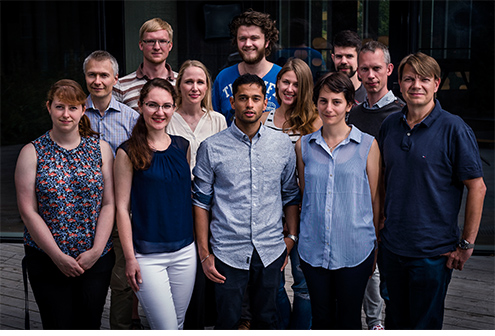Olsen Group publishes two papers showing versatile use of quantitative MS-based proteomics
Quantitative mass spectrometry (MS)-based proteomics is a powerful tool that can be utilized to answer various biological and environmental questions. The Olsen Group from the Proteomics Program at the Novo Nordisk Foundation Center for Protein Research (CPR) publishes two papers showing different use of quantitative MS-based proteomics. One article, published in Nature Communications, uses metaproteomics of dental calculus to reveal oral health status of individuals excavated from a medieval cemetery. The other article, published in Science Signaling, uses integrated proximal proteomics (IPP) to investigate signaling pathways in anaplastic lymphoma kinase (ALK)-driven neuroblastoma. 
New understanding of oral health in ancient humans - Quantitative metaproteomics of medieval dental calculus reveals oral health status
Dental calculus (mineralized plaque) from archeological samples preserves ancient biomolecules related to diet, the oral microbiome, and human host proteins and DNA. Metaproteomics can be used to reveal not only the levels of individual proteins expressed by different organisms in the dental calculus but also identify which proteins were expressed by the host.
In this study, quantitative metaproteomics were used to characterize the dental calculus from the remains of 21 humans retrieved during the archeological excavation of a medieval (ca. 1100-1450 CE) cemetery in Denmark.
"Quantitative metaproteomics provides an additional layer of molecular information, which we can utilize to learn more about oral health status of ancient individuals", says Professor Jesper V. Olsen.
The metaproteome profiles of bacterial and human proteins revealed two distinct groups of individuals – a health-predisposed and an oral-disease susceptible group. This grouping cannot be identified by conventional bioarchaeological analysis.
Finding of two potential drug targets to treat neuroblastoma - Integrated proximal proteomics reveals IRS2 as a determinant of cell survival in ALK-driven neuroblastoma
Mutations that render the oncogenic receptor tyrosine kinase ALK constitutively active predispose for the cancer type, neuroblastoma. Thus, different inhibitors against this kinase has been investigated for therapeutic purposes. However, resistance to these drugs poses a clinical challenge and more knowledge of how increased ALK activity drives growth of neuroblastoma cells is important.
"These findings provide critical insight into the mechanisms of how ALK can drive growth of aggressive neuroblastoma – and in addition we have identified additional potential targets that when inhibited can reduce the viability of these cancer cells", says Professor Jesper V. Olsen.
In this study, Olsen Group applied an integrated proximal proteomics (IPP) approach, which included quantitative analysis of multiple signaling layers – the ALK interactome, phosphotyrosine interactome, phosphoproteome, and proteome. This extensive proteomics analysis revealed insulin receptor substrate 2 (IRS2) as a major ALK target important for the survival of ALK-driven neuroblastoma cells.
Read the entire stories:
1. https://www.nature.com/articles/s41467-018-07148-3 - Read more about it in Danish from Videnskab.dk: https://videnskab.dk/naturvidenskab/middelalderjyder-havde-bloedende-gummer-og-tandkoedsbetaendelse
2. http://stke.sciencemag.org/content/11/557/eaap9752
Contact:
Professor Jesper Velgaard Olsen
Jesper.olsen@cpr.ku.dk
+45 35 32 50 22

